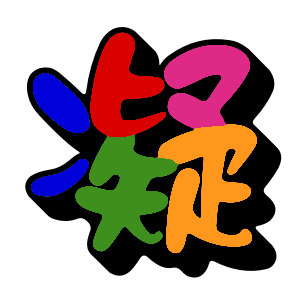 We all have some characters that just refuse to stick and that we keep forgetting over and over. The best way of learning tricky characters in Chinese is to deal with them decisively. For more about how to do that, check the first article in this series.
We all have some characters that just refuse to stick and that we keep forgetting over and over. The best way of learning tricky characters in Chinese is to deal with them decisively. For more about how to do that, check the first article in this series.The most difficult Chinese characters
In this article, I will go through some of the most difficult characters. This difficulty is not based on my opinion, it’s based on statistics fetched from our database. We know which characters Skritter users get wrong most often.
For each character, I will explain:
- Character frequency and basic definition
- Pronunciation
- Character composition and formation
- The component parts and their functions
- Common words and/or phrases for context
- Why the character might be difficult
Previous articles:
13. 叛 (pàn) “to rebel against; betray” (frequency rank: ~1800)
This is a phonetic-semantic compound, which means that one part (the left) represents meaning and one part represent the sound (the right). We have 半 “half” and 反 “opposite; turn over” (pronounced fǎn, so the final is the the same).
- 背叛 (bèipàn) “to betray)
- 叛徒 (pàntú) “traitor”
- 反叛 (fǎnpàn) “to rebel; revolt”
I’m a bit perplexed as to why this character is on our list of most difficult characters (remember, this list is based on what users actually get wrong, not my personal opinion). Both the component characters are really common. I would use a simple mnemonic for this, involving cutting a person in half and turning him over (to the other side). Do you find this character difficult? Please let me know why!
14. 沈 (chén/Shěn) “to sink/(a surname)” (frequency rank: ~1600)This character has two pronunciations. First, it’s a common surname Shěn. Second, it’s a variation of the character 沉, which means “to sink” and is pronounced chén. It’s a left-right compound which is allegedly a semantic-phonetic component, but the pronunciation has changed quite a bit (the right part is read yín) and mean “to leave; go out”.
15. 凝 (níng) “to congeal; fix” (frequency rank: ~1500)This is also a phonetic-semantic compound (they really are very common). The left part is “ice” bīng in its radical form, the right part is 疑 yí “to doubt”, which is in itself a tricky character. As you can see, though, the pronunciation has shifted quite a bit and is no longer of much help (same tone and both contains a similar vowel sound; better than nothing I guess!).
Here are some common words with 凝:
- 凝固 (nínggù) “to freeze; solidify”
- 凝視 (níngshì) “to gaze at”
This character is of course difficult because the right part is horribly difficult to remember. I actually mentioned that as one of the characters I found hardest to learn. If you already know that character, it’s easy to come up with mnemonics involving doubt and freezing, unable to move or make a decision. That doesn’t really help much if it’s actually 疑 you’re having a problem with, though, so let’s look at that.
疑 contains the components 匕 “knife; spoon”, 矢 “arrow”, 疋 “bolt of cloth” and a form of 予, which means “I; me ” in classical Chinese. See if you can come up with a picture involving “to doubt” and a knife/spoon (sort of like a spork?), an arrow, a bolt of cloth and an ancient version of yourself!
Practise writing the character using the scratchpad!
—
That’s it for today! Do you find these characters difficult? Have you developed good mnemonics for than? Or do you have a question? Leave a comment!
